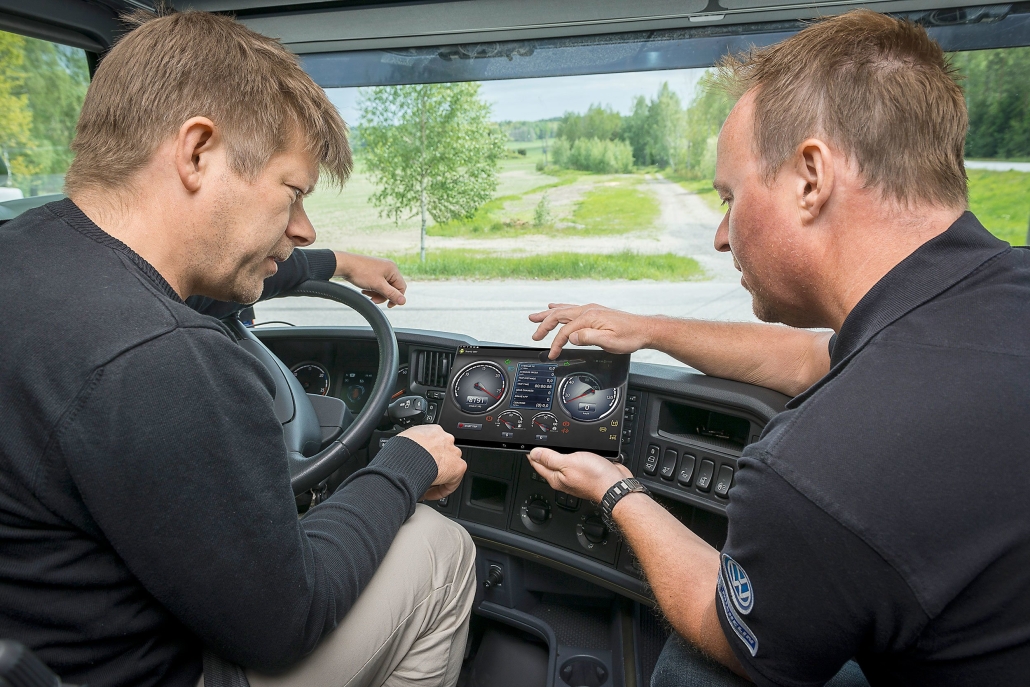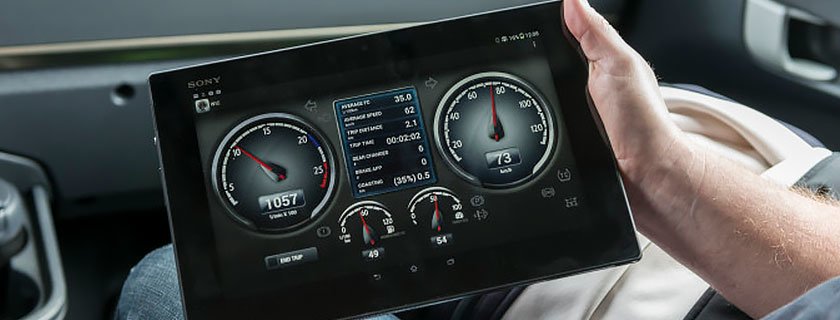Case study: Scania – Android tablet for HGV driver training
Android tablet transforms training experience
Scania has used an Android driver developed by TK Engineering (TKE) and CAN interfaces from Kvaser to develop a user-friendly tablet solution for HGV driver training.
Until the launch of the HGV driver training tablet, Scania’s driver trainers had to perch between the front seats in order to see the instrument panel and determine exactly how the driver was operating the pedals. Whilst being ergonomically awkward, the practice presented a safety risk. “We realised that in worst case our trainers could be injured in a harsh braking situation,” says Magnus Andersson, Product manager at Scania’s E-Business and New Media.
Scania will launch WICkit – Wireless Instrument Cluster

This awareness prompted the idea of developing a tablet application that would precisely replicate the data from the instrument panel, allowing the trainer full visibility of all driver inputs, plus providing data reporting capabilities. Following an ongoing pilot study in Denmark, The tool are distributed with in the network for Scania Driver Trainers. Scania will launch WICkit – Wireless Instrument Cluster. The kit includes a durable tablet and the recently-developed Vehicles Communication Interface (VCI), which wirelessly relays data from the HGV’s control system to the tablet. TKE developed the Android driver that allows a smartphone or tablet to connect to any Kvaser USB or Wifi CAN interface, whilst the Kvaser Blackbird CAN interface wirelessly connects the trainer’s tablet to the CAN bus.
Real-time access to driver inputs
The device gives trainers real-time access to driver inputs in sessions run before and after an eco-training theory session. A distinct advantage of the VCI is that additional information such as momentary fuel consumption is displayed. With the naked eye its can be difficult to determine the precise pressure on the accelerator pedal but the tablet digitally shows this value as a percentage. The driver trainer also receives information about the number of gear shifts and braking, coasting as a percentage and in kilometres as well as the total distance and total time spent in driver training.
Following the session, the instructor can automatically generate a report with accumulated data during training, which can then be emailed to the driver and his or her employer. “It’s simply more professional and more efficient than jotted notes on paper as well as providing a better work environment,” says Magnus Andersson.
Java API for easy development of native Android applications
The Kvaser Android driver comes with a Java API for easy development of native Android applications. There’s also a standard C API that helps users port legacy CAN code. CANopen support for Android is provided within TKE’s CANopen Stack for Kvaser interfaces. For more information, please visit www.tke-usa.com/drivers/kvaser-android-driver



